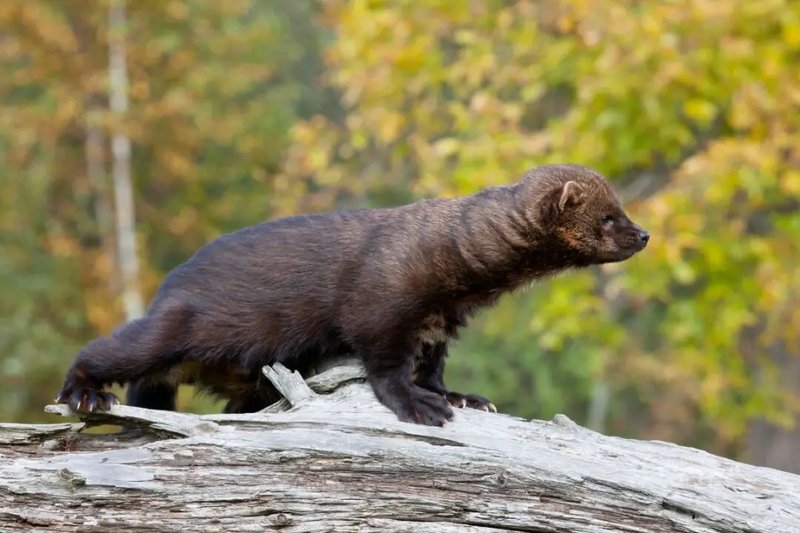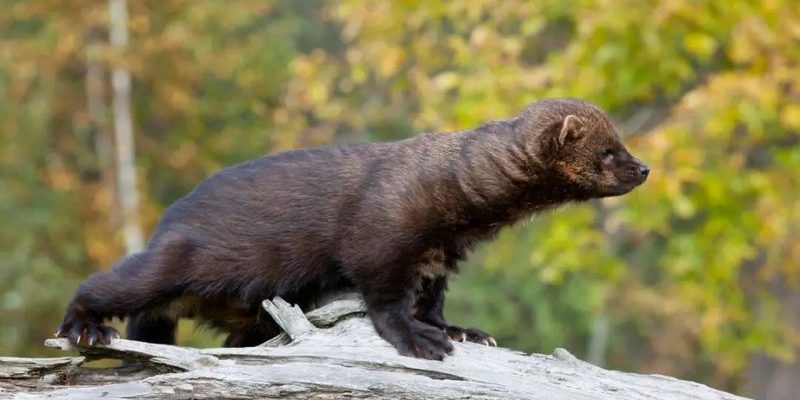
In this article, we’ll explore ten animals that resemble the fisher. We’ll break down their characteristics and behaviors to help you spot the differences easily. Whether you’re a wildlife enthusiast, an aspiring naturalist, or just curious about nature, this guide will provide you with all the details you need to differentiate these creatures. So grab your coffee, and let’s dive into the world of these captivating animals!
What Is a Fisher?
Before we jump into the comparisons, let’s clarify what a fisher actually is. The fisher (Pekania pennanti) is a medium-sized mammal native to North America, particularly found in forests and wooded areas. Known for their long, slender bodies and bushy tails, fishers have dark brown fur that helps them blend seamlessly into their woodland habitats.
One of the unique aspects of fishers is their affinity for climbing trees. They are agile enough to pursue their primary prey, which includes porcupines, into the treetops. This hunting behavior sets them apart from other weasels and makes them fascinating to observe. You might be wondering, “What other animals could possibly resemble such a unique creature?” Well, let’s take a look!
1. Marten
The marten, like the fisher, belongs to the weasel family (Mustelidae). These animals are known for their sleek bodies and adorable faces, often featuring a distinctive pale throat patch. Martens primarily inhabit forests and are skilled at climbing trees, just like fishers.
To tell martens apart from fishers, pay attention to their size. Martens are generally smaller, reaching about 1.5 to 2.5 feet long, while fishers can grow up to 4 feet! Additionally, the marten’s fur is lighter and can be a golden to light brown color, which contrasts sharply with the fisher’s darker coat. If you spot a small, nimble creature flitting through the trees, it’s likely a marten!
2. Pine Marten
Often confused with the regular marten, the pine marten (Martes martes) is another similar species. They thrive in coniferous forests, which is where they get their name. Like fishers, pine martens are climbers and exhibit playful behavior.
When trying to distinguish a pine marten from a fisher, focus on the coloration and habitat. Pine martens have a more pronounced yellowish throat patch and are generally more agile than fishers. They also tend to be found in the northern regions of Europe, whereas fishers are primarily North American residents.
3. Ocelot
Now, you might not expect an ocelot (Leopardus pardalis) to be on this list, but hear me out! These beautiful, spotted cats from Central and South America share some similar habitat preferences with fishers.
However, the similarities mostly end at their woodland homes. Ocelots are larger than fishers and have striking fur patterns with spots and stripes, giving them a distinctive appearance. If you’re in the woods and see something with large, feline characteristics, you can be sure it’s not a fisher!
4. Fisher Cat
Confusingly named, the fisher cat isn’t a separate species but often refers to the fisher itself. However, some people mistakenly use this term to describe other animals that have feline features. If you hear someone talking about a fisher cat, they could be referring to the actual fisher or mistakenly talking about domestic or wild cats that have similar body shapes.
To avoid confusion, remember that while fishers are part of the weasel family, domestic cats belong to the Felidae family. They have entirely different behaviors and habitats!
5. Badger
Badgers are another animal that sometimes gets mixed up with fishers. With their stout bodies and short legs, badgers often have a similar build. They are primarily ground dwellers, digging extensive burrows in their search for food.
To tell them apart, look at the facial features. Badgers have distinctive white stripes on their faces, and their fur is typically grayish with a stout, stocky appearance. Fishers, on the other hand, have a sleeker, longer shape and a bushy tail that gives them a more agile look.
6. River Otter
Ah, the river otter (Lontra canadensis)! These playful creatures often inhabit the same environments as fishers, which is part of why they might get confused. Otters have long, streamlined bodies and are excellent swimmers, unlike fishers, which prefer to stay mostly on land.
River otters have webbed feet and a flatter, more rounded head, which distinguishes them from the fisher’s pointed face. If you spot an animal splashing around in the water, you’re likely looking at an otter!
7. Ermine
The ermine (Mustela erminea), also known as the short-tailed weasel, is smaller but shares certain physical characteristics with fishers. They have a slender body and a similar hunting style, chasing after small rodents in their habitats.
However, ermines are much smaller, and their fur can change color with the seasons, turning white with black tips in winter. This is a huge contrast to the fisher’s consistent dark brown coat. If you spot something scurrying along the ground, check its size and color to determine if it’s an ermine!
8. European Polecat
The European polecat (Mustela putorius) is somewhat similar in size and shape to a fisher. These animals have a dark, shaggy coat and long bodies, making them look like smaller fishers at first glance.
To differentiate between the two, take a closer look at the polecat’s face, which often has a distinctive mask-like pattern. Additionally, polecats tend to be more nocturnal, while fishers can be active during the day.
9. Common Raccoon
Raccoons, with their mischievous antics and mask-like facial markings, are often considered the clowns of the animal kingdom. While they don’t directly resemble fishers, their habitats sometimes overlap, and their size can make them look similar from a distance.
To tell the two apart, watch their behavior. Raccoons are typically more social and often forage through trash cans or along riverbanks, while fishers prefer the solitude of wooded areas. Plus, raccoons have that adorable ringed tail which is a dead giveaway!
10. Groundhog
As we wrap up our list, let’s not forget the groundhog (Marmota monax). Although they look nothing like fishers at first glance, groundhogs share the same woodland habitats. These stout creatures are known for their burrowing habits and hibernation behavior, while fishers are more agile hunters.
To differentiate between the two, consider size and body shape. Groundhogs are larger and bulkier than fishers, with a chunky body and short legs. When you spot a furry ball of fluff, it’s likely a groundhog and not a fisher!
Final Thoughts
Exploring the world of wildlife and understanding the differences between animals like the fisher and its look-alikes can deepen your appreciation for nature. With birds, mammals, and other critters in the mix, it’s like stepping into a vibrant tapestry of life.
Next time you’re wandering through the woods, keep an eye out for these animals and remember their unique traits. This knowledge not only enriches your outdoor experiences but also fosters respect for these amazing creatures and their habitats. Happy adventuring!

